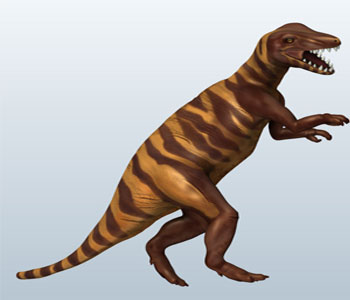Gryponyx africanus was described with the help of a holotype named SAM 3357-59 known to be approximately the complete region of the postcranical skeleton which contains parts of the vertebral column, pelvis, also both of the forelimbs and the hindlimbs. The length of the animal is measured to be 5m which is 16 feet, they are gathered by the Upper Elliot Formation of the Stormberg Group found in the Karoo basin estimated to be originated in the time scales of the Hettangian to Sinemurian from the Lower Jurassic period.
Initially they were explained to be a theropod by Broom in the year of 1911, Later Huene proposed that the Gryponychidae's family has the Gryponyx and Aetonyx which in turn comes under the Carnosauria, the names of G. africanus along with Massospondylus harriesi were given by Galton and Cluver in the year of 1976 which was again renamed by Michael Cooper to be Massospondylus carinatus in the year of 1981. But nowadays it is known as nomen dubium. Later Gryponyx known to be unique when compared with all other sauropodomorphs coming under them and have unique genus by Vasconcelos and Yates in the year of 2004.

The Gryponyx was found unique based on the follow aspects they were the length of the metacarpal known to be having an increased length crossing the maximum proximal width size and contains a lengthy, narrow pubic apron containing margins which are straight. This explanation was not published further they made a comparison within various species by Yates in 2004 with the help of sauropodomorph matrix proving that Gryponyx comes under the most basal category of massospondylid the research of Lü et al and Yates et al in the year 2010 proved to be the same which induced in changing Gryponyx to be in trichotomy along with a combination of Massospondylidae and Anchisauria, Later it was not known to be changed.
Additively two more species of the Gryponyx was explained too, : G. transvaalensis explained considering the finger bones also the anterior limb metatarsals having its origin in the Late Triassic Bushveld Sandstone Formation of Transvaal and the G. taylori explained using the sacral and pelvic rim found out in Upper Elliot Formation of the southern Free state. The G. taylori was renamed to be M. harriesi and categorized the G. transvaalensis as a nomen dubium by Galton and Cluver in the year of 1976. The G. taylori and G. transvaalensis was named M. carinatus by Michael Cooper in the year of 1981, also Galton and Upchurch stated the description to be doubtful one in the year of 2004.
| Gryponyx facts: | ||||||||
|
||||||||